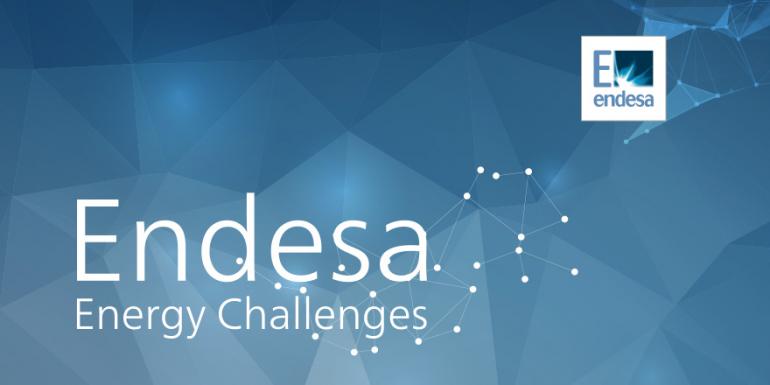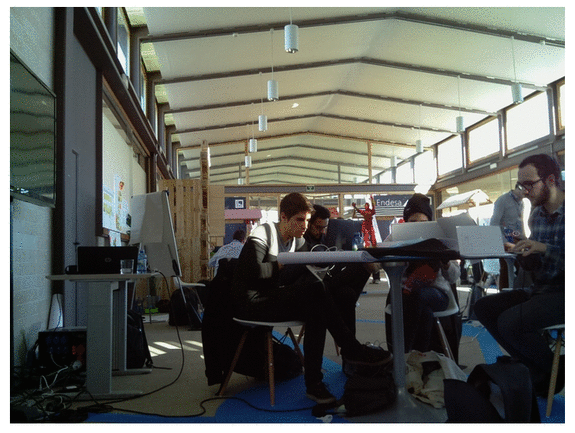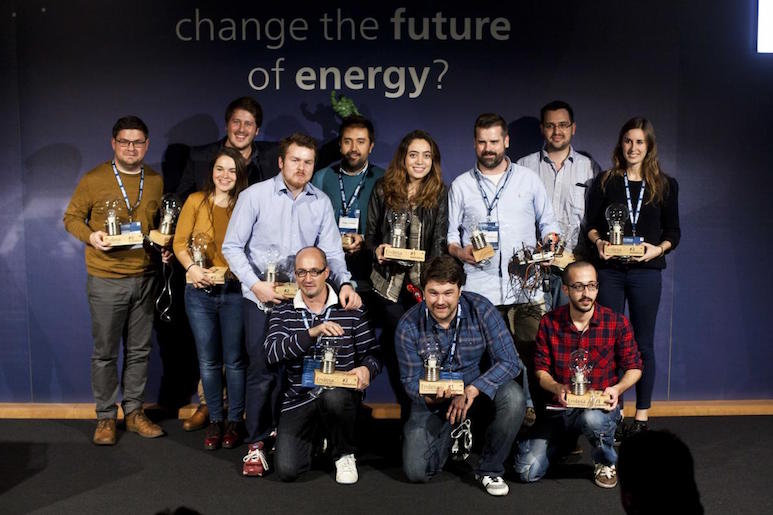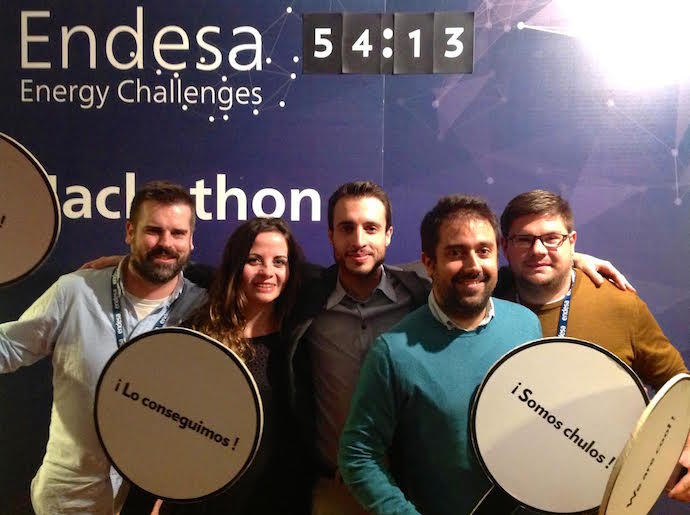Thermoman 360 - Smart home thermal imaging solution for effecient use of energy.
# The event
This project was developed during the first Endesa Energy Challenges Hackathon, held in the Official College of Madrid Architects (COAM, in Madrid, Spain between October 9th and 11th 2015.
The event was sponsored by Endesa and runned by Opinno. Mentors from both organizations were present during the whole event, helping teams to structure and develop their ideas.
# The idea
Our project was defined as "An application that locates inefficiencies and energy loss within the home through the use of a thermographic sensor that detects differences in temperature"
The goal was to develop a low cost thermographic camera that allowed the monitoring of rooms, learning about its users habits and detecting waste.
This data, cross-referenced with external inputs, would generate recommendations to achive the most efficient use of energy.
The team
Meet the team:
- Fernando Álvarez-Uría, Software Engineer. fauria@gmail.com. Twitter: @fauria
- Nuño Valencia, Industrial Engineer. info@nunovalencia.info Twitter: @NuoValencia
- Andrea Jiménez, Business Analyst andreaj.567@gmail.com. Twitter: [@eatgreekspeakfr](https://twitter.com /eatgreekspeakfr)
- Diego Lasaosa, Architect. diegolasaosa@certicalia.com Twitter: @diegolasaosa
The teams were already pre-assigned before the event, although we hadn't met before.
At the entrance, the organisation handed each participant a hackathon kit, containing among other goodies one piece from a puzzle.
The hackathon members teamed up by matching their puzzle pieces during a networking session.
Each one had a superhero assigned, and ours was Ironman, thus the name of the project.
Hardware
For this project, we relied on the following parts:
- Raspberry Pi model B, with GPIO header break out.
- Raspberry Pi Camera Module.
- Arduino Uno board.
- Grove Base Shield
- Melexis MLX 90614 digital thermopile with 10° Field of View (FOV). Based on this project, an infrared thermometer Grove module was later produced.
- Pan-tilt head, composed by two servos.
- Protoboards
The thermographic camera consisted on a piece of foam with both the camera and the sensor attached in a 90° angle arrangement.
This way, alternating the vertical servo between 0° and 90° allowd the usage of both the camera and the sensor.
Software
We developed an Arduino sketch that performed a scan using the pan-tilt head.
Knowing the field of view of the sensor was 10° on both axis, and the camera FOV 53.50° and 41.41° on X and Y respectively, we coud estimate a matrix of sensor readings.
This approach was not very pricese, but enough for a proof of concept.
The Raspberry Pi runned a Node.js application, communicating with Arduino via USB serial terminal. Events were used to coordinate the different actions.
A web interface displayed the results, using an HTML5 canvas for the readings.
Future improvements
The prototype was just a proof of concept.
A potential commercial application should be efficient, able to perform readings in 360° and easly integrable in a home among many others.
The prototype
For the assembly of the prototype we used a protoboard as a base, with the pant-tilt head, sensor foam setup and Raspberry Pi attached.
To perform a thermal image, the following steps were taken from the Node.js application on the Raspberry Pi:
- Send a
snapcommand to Arduino to move the vertical servo to 90° and the horizontal servo to 180°. The camera should be looking forward. - Take a picture
- Send a
resetcommand to Arduino to put both servos on0,0coordinates. - Send a
scancommand to Arduino. Now the servos start moving in increments, performing a sendor reading on each step. A JSON encoded string is sent back to the Raspberry Pi. - Send a ``neutral``` command to Arduino. This sets both servos on 90°.
- Parse the JSON string sent from Arduino and display the image taken with a canvas overly showing the temperatures.
The pitch
The jury was formed by:
Juan Garrigosa (Head of Innovation at Endesa), Sandra Alfonso (Head of Digital Market Transformation at Endesa), Jorge Sánchez-Mayoral (Digital Channel Director & Customer Experience at Endesa), Enrique Dans (Professor at IE Business School), Antonio Fontanini (Cex Advisor and Chief Optimistic Officer at Opinno), Alberto Levy (Innovation Evangelist) and Javier Noguerol (Senior researcher at Future Doers).
The pitch consisted on a five minutes talk, and altought the prototype could not be used live, the results were shown on the presentation.
Awards
We won the first prize, awarded with 6.000€ for the team and four wooden table lamps, one for each member.
Afterwork
After the prize-giving, the hackathon participants were taken to a special afterwork, held in Exit Madrid. It consisted on a escape room game, were we had to solver serveral puzzles inside a locked room before a certain deadline.
We had a great time there, working again together, but this time on a very different problem.
Coverage
November 30th, 2015
Video: Endesa Hackathon: Así se desarrolló el primer Hackathon de los #Energychallenges
November 25th, 2015
### Article: Jóvenes competirán en un concurso para diseñar soluciones energéticas
November 30th, 2015
### Article: Una aplicación para saber por dónde se escapa el calor en casa gana el primer Hackathon Endesa
November 30th, 2015
### TV: Una aplicación para saber por dónde se escapa el calor en casa gana el primer Hackathon Endesa
November 30th, 2015
### Article: Una app para saber por dónde se escapa el calor en casa gana el primer Hackathon Endesa
November 30th, 2015
### Article: Una aplicación para saber por dónde se escapa el calor en casa gana el primer Hackathon Endesa
November 30th, 2015
### Article: Una app para saber por dónde se escapa el calor en casa gana el primer Hackathon Endesa
December 1st, 2015








